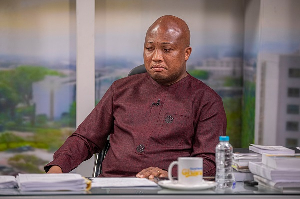Government’s efforts to address the debt position of four key state-owned enterprises in the energy sector has left the International Monetary Fund (IMF) flummoxed as to how the debt restructuring strategy will absolve the companies from plunging themselves in future debts.
The borrowings of the four firms- VRA, ECG, GRIDCo and TOR- hit GH¢19 billion at the end of last year, triggering concerns of systemic crisis in the face of the debt linkages between the state-owned companies and banks.
The mounting debt position was contained in a data submitted to the International Monetary Fund (IMF) by government as part of the ongoing US$918 million 3-year Extended Credit Facility deal.
The Fund warned that if not checked, these mounting liabilities could lead to renewed disruption to fuel supplies and electricity generation.
“While revenues from the new energy sector levies are significant and sufficient to cover the VRA and TOR debt restructurings, the new fuel levies will not be able to also cover continued accumulation of receivables by ECG at the recent pace. Closing the gap between ECG’s billing and collection is therefore critical,” the Fund said.
According to the data, as at end of 2015, the Volta River Authority, Ghana Grid Company, the Electricity Company of Ghana and the Tema Oil Refinery held liabilities in excess of GH¢19.2 billion.
Out of the lot, VRA holds the biggest share of the liabilities with an amount of GH¢7.7 billion closely followed by the ECG, which owes GH¢7.1 billion in unpaid debt while GRIDCo and TOR owe GH¢1.6 billion and GH¢2.7 billion respectively.
The domino effect of the energy sector debts is the tightening of credit conditions and increased cost of borrowing, which has further increased the difficulties businesses face in accessing capital finance.
The government in addition has come under severe pressure to directly fund the state-owned energy companies and grant additional debt guarantees at a time when the government is expected to rein in the budget deficit to protect the country’s credit rating position.
One of the core tenets of the IMF deal is to reform the energy sector SOEs to lessen their burden on the fiscal authorities. The Fund programme was crafted with a raft of initiatives to reduce quasi-fiscal losses and improve the financial position of energy sector SOEs.
As a result, the Public Utilities Regulatory Commission has been pushed to enforce the quarterly automatic tariff adjustment formula, so that tariffs are set at full cost recovery. Retail electricity tariffs were increased in December 2015 by 59 percent.
As part of the government’s turnaround plan to address the root causes of the country’s power challenges, a concession agreement under which a private sector operator would assume responsibility for power sales to end-users has been launched as part of the Millennium Challenge Corporation under a compact that entered into force last month.
The Finance Ministry last month also announced that an agreement has been reached with banks for the restructuring of what amounts to roughly half of all VRA and TOR debts.
The Energy Sector Levies Act (ESLA), introduced new levies to, among others, address the legacy debt of TOR and support the payment of power utility debts. These levies, GH¢ 0.41 per liter on petrol and diesel, serve as collateral and funding for debt restructuring with banks.
The Finance Minister Seth Terkper, speaking at a press briefing in Accra said: “acting prudently and responsibly, the government is stepping in along with other stakeholders to create an enabling environment to ensure coordinated restructuring and repayments of these legacy debts with agreement in principle now reached with the banks.”
According to Mr. Terkper, the restructured debts will be removed from the two companies’ balance sheets and be serviced from a debt recovery account at the Bank of Ghana funded primarily by proceeds from the levies.
Subsequent phases of the restructuring plan is expected to address other debts as well as inter-SOE arrears and other payables. A full audit and financial viability analysis of energy SOEs, according to the IMF, is expected to be completed by end-2016.
Progress
The Fund’s report following the approval of the third tranche of the US$116.8 million noted that the restructuring process has begun to bear fruit but important challenges remain.
Financial results for the first half of 2016 indicate that, bolstered by the increase in electricity tariffs, the net income position of VRA and ECG has swung close to balance.
“The lifting off of their balance sheets of the restructured VRA and TOR debts will provide further relief to those two companies. At the same time, however, as a result of timing lags as well as more fundamental problems in collection, ECG receivables have continued to accumulate,” the Fund said.
The stock of ECG receivables is said to have increased by almost GH¢1 billion in the first half of 2016, mainly on account of private sector customers. This increase in ECG receivables was matched by an almost equal rise in the company’spayables, which effectively cascaded down the supply chain to end up as VRA payables to suppliers.
Business News of Tuesday, 11 October 2016
Source: thebftonline.com
Power firms in GH¢19bn maze of debt
Entertainment
















